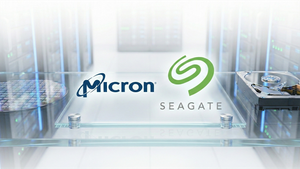Five Year Collaboration Intended to Advance PD-1 / VEGF Bispecific in Several Solid Tumors across Multiple Clinical Trials
Summit Therapeutics Inc. (NASDAQ: SMMT) (“Summit,” “we,” or the “Company”) and The University of Texas MD Anderson Cancer Center (MD Anderson) today announced a strategic five-year collaboration agreement for the purpose of accelerating the development of ivonescimab.
Leveraging MD Anderson’s clinical infrastructure and research expertise together with Summit’s innovative, investigational, potential first-in-class PD-1 / VEGF bispecific antibody, the collaboration is designed to quickly discover additional opportunities for ivonescimab, including several tumors outside of its current development plan. MD Anderson will lead multiple clinical trials in several tumor types to evaluate the safety and potential clinical benefit of ivonescimab, including the possibility of identifying biomarkers through additional research activities.
“We are excited to collaborate with MD Anderson to provide unique insights and expertise to further broaden the development of ivonescimab,” stated Allen S. Yang, MD, PhD, Chief Medical Officer of Summit. “This collaboration will help accelerate the growing clinical development efforts for ivonescimab and help bring this innovative advancement on immunotherapy and anti-angiogenic standards to as many patients who may benefit as possible.”
Early work may include certain types of renal cell carcinoma, colorectal cancer, skin cancer, and breast cancer and glioblastoma, which has the potential to rapidly expand the breadth and depth of the ivonescimab development program. The bispecific antibody has shown significant promise in recent read-outs from the randomized Phase III non-small cell lung cancer clinical trials, HARMONi-A and HARMONi-2, conducted by Summit’s partner, Akeso, in addition to promising Phase II data in other solid tumors.
“Through our extensive clinical research efforts, we are committed to bringing impactful new medicines to patients in need as rapidly as possible,” said Christopher Flowers, M.D., Division Head of Cancer Medicine at MD Anderson. “We are pleased to be collaborating with Summit to broaden the clinical development efforts of ivonescimab and its unique mechanism of action to support our mutual goal to improve the therapeutic options for patients with cancer.”
MD Anderson and Summit will collaborate on the design and conduct of preclinical and clinical studies with oversight from a joint steering committee. This research is expected to begin later this year.
About Ivonescimab
Ivonescimab, known as SMT112 in Summit’s license territories, the United States, Canada, Europe, Japan, Latin America, including Mexico and all countries in Central America, South America, and the Caribbean, the Middle East, and Africa, and as AK112 in China and Australia, is a novel, potential first-in-class investigational bispecific antibody combining the effects of immunotherapy via a blockade of PD-1 with the anti-angiogenesis effects associated with blocking VEGF into a single molecule. Ivonescimab displays unique cooperative binding to each of its intended targets with multifold higher affinity when in the presence of both PD-1 and VEGF.
This could differentiate ivonescimab as there is potentially higher expression (presence) of both PD-1 and VEGF in tumor tissue and the tumor microenvironment (TME) as compared to normal tissue in the body. Ivonescimab’s tetravalent structure (four binding sites) enables higher avidity (accumulated strength of multiple binding interactions) in the tumor microenvironment with over 18-fold increased binding affinity to PD-1 in the presence of VEGF in vitro, and over 4-times increased binding affinity to VEGF in the presence of PD-1 in vitro (Zhong, et al, SITC, 2023). This tetravalent structure, the intentional novel design of the molecule, and bringing these two targets into a single bispecific antibody with cooperative binding qualities have the potential to direct ivonescimab to the tumor tissue versus healthy tissue. The intent of this design, together with a half-life of 6 to 7 days (Zhong, et. al., SITC, 2023), is to improve upon previously established efficacy thresholds, in addition to side effects and safety profiles associated with these targets.
Ivonescimab was engineered by Akeso Inc. (HKEX Code: 9926.HK) and is currently engaged in multiple Phase III clinical trials. Over 1,800 patients have been treated with ivonescimab in clinical studies globally.
Summit has begun its clinical development of ivonescimab in non-small cell lung cancer (NSCLC), commencing enrollment in 2023 in two multi-regional Phase III clinical trials, HARMONi and HARMONi-3.
HARMONi is a Phase III clinical trial which intends to evaluate ivonescimab combined with chemotherapy compared to placebo plus chemotherapy in patients with EGFR-mutated, locally advanced or metastatic non-squamous NSCLC who have progressed after treatment with a 3rd generation EGFR TKI (e.g., osimertinib).
HARMONi-3 is a Phase III clinical trial which is designed to evaluate ivonescimab combined with chemotherapy compared to pembrolizumab combined with chemotherapy in patients with first-line metastatic squamous NSCLC.
In addition, Akeso has recently had positive read-outs in two single-region (China), randomized Phase III clinical trials for ivonescimab in NSCLC, HARMONi-A and HARMONi-2.
HARMONi-A was a Phase III clinical trial which evaluated ivonescimab combined with chemotherapy compared to placebo plus chemotherapy in patients with EGFR-mutated, locally advanced or metastatic non-squamous NSCLC who have progressed after treatment with an EGFR TKI.
HARMONi-2 is a Phase III clinical trial evaluating monotherapy ivonescimab against monotherapy pembrolizumab in patients with locally advanced or metastatic NSCLC whose tumors have positive PD-L1 expression (PD-L1 TPS >1%).
Ivonescimab is an investigational therapy that is not approved by any regulatory authority in Summit’s license territories, including the United States and Europe. Ivonescimab was approved for marketing authorization in China in May 2024.
About Summit Therapeutics
Summit Therapeutics Inc. is a biopharmaceutical oncology company focused on the discovery, development, and commercialization of patient-, physician-, caregiver- and societal-friendly medicinal therapies intended to improve quality of life, increase potential duration of life, and resolve serious unmet medical needs.
Summit was founded in 2003 and our shares are listed on the Nasdaq Global Market (symbol "SMMT"). We are headquartered in Miami, Florida, and we have additional offices in Menlo Park, California, and Oxford, UK.
For more information, please visit https://www.smmttx.com and follow us on X @SMMT_TX.
About MD Anderson
The University of Texas MD Anderson Cancer Center in Houston ranks as one of the world's most respected centers focused on cancer patient care, research, education and prevention. The institution’s sole mission is to end cancer for patients and their families around the world, and, in 1971, it became one of the nation’s first National Cancer Institute (NCI)-designated comprehensive cancer centers. MD Anderson is No. 1 for cancer in U.S. News & World Report’s “Best Hospitals” rankings and has been named one of the nation’s top two hospitals for cancer since the rankings began in 1990. MD Anderson receives a cancer center support grant from the NCI of the National Institutes of Health (P30 CA016672).
Summit Forward-looking Statements
Any statements in this press release about the Company’s future expectations, plans and prospects, including but not limited to, statements about the clinical and preclinical development of the Company’s product candidates, entry into and actions related to the Company’s partnership with Akeso Inc., including the expected benefits of the amendment to the collaboration and license agreement, the intended use of the net proceeds from the private placement, the Company's anticipated spending and cash runway, the therapeutic potential of the Company’s product candidates, the potential commercialization of the Company’s product candidates, the timing of initiation, completion and availability of data from clinical trials, the potential submission of applications for marketing approvals, potential acquisitions, statements about the previously disclosed At-The-Market equity offering program (“ATM Program”), the expected proceeds and uses thereof, and other statements containing the words "anticipate," "believe," "continue," "could," "estimate," "expect," "intend," "may," "plan," "potential," "predict," "project," "should," "target," "would," and similar expressions, constitute forward-looking statements within the meaning of The Private Securities Litigation Reform Act of 1995. Actual results may differ materially from those indicated by such forward-looking statements as a result of various important factors, including the Company’s ability to sell shares of our common stock under the ATM Program, the conditions affecting the capital markets, general economic, industry, or political conditions, including the results of our evaluation of the underlying data in connection with the development and commercialization activities for ivonescimab, the outcome of discussions with regulatory authorities, including the Food and Drug Administration, the uncertainties inherent in the initiation of future clinical trials, availability and timing of data from ongoing and future clinical trials, the results of such trials, and their success, and global public health crises, that may affect timing and status of our clinical trials and operations, whether preliminary results from a clinical trial will be predictive of the final results of that trial or whether results of early clinical trials or preclinical studies will be indicative of the results of later clinical trials, whether business development opportunities to expand the Company’s pipeline of drug candidates, including without limitation, through potential acquisitions of, and/or collaborations with, other entities occur, expectations for regulatory approvals, laws and regulations affecting government contracts and funding awards, availability of funding sufficient for the Company’s foreseeable and unforeseeable operating expenses and capital expenditure requirements and other factors discussed in the "Risk Factors" section of filings that the Company makes with the Securities and Exchange Commission. Any change to our ongoing trials could cause delays, affect our future expenses, and add uncertainty to our commercialization efforts, as well as to affect the likelihood of the successful completion of clinical development of ivonescimab. Accordingly, readers should not place undue reliance on forward-looking statements or information. In addition, any forward-looking statements included in this press release represent the Company’s views only as of the date of this release and should not be relied upon as representing the Company’s views as of any subsequent date. The Company specifically disclaims any obligation to update any forward-looking statements included in this press release.
Appendix: Glossary of Critical Terms Contained Herein
Affinity – Affinity is the strength of binding of a molecule, such as a protein or antibody, to another molecule, such as a ligand.
Avidity – Avidity is the accumulated strength of multiple binding interactions.
Angiogenesis – Angiogenesis is the development, formation, and maintenance of blood vessel structures. Without sufficient blood flow, tissue may experience hypoxia (insufficient oxygen) or lack of nutrition, which may cause cell death.1
Cooperative binding – Cooperative binding occurs when the number of binding sites on the molecule that can be occupied by a specific ligand (e.g., protein) is impacted by the ligand’s concentration. For example, this can be due to an affinity for the ligand that depends on the amount of ligand bound or the binding strength of the molecule to one ligand based on the concentration of another ligand, increasing the chance of another ligand binding to the compound.2
Immunotherapy – Immunotherapy is a type of treatment, including cancer treatments, that help a person’s immune system fight cancer. Examples include anti-PD-1 therapies.3
Intracranial - Within the cranium or skull.
PD-1 – Programmed cell Death protein 1 is a protein on the surface of T cells and other cells. PD-1 plays a key role in reducing the regulation of ineffective or harmful immune responses and maintaining immune tolerance. However, with respect to cancer tumor cells, PD-1 can act as a stopping mechanism (a brake or checkpoint) by binding to PD-L1 ligands that exist on tumor cells and preventing the T cells from targeting cancerous tumor cells.4
PD-L1 – Programmed cell Death Ligand 1 is expressed by cancerous tumor cells as an adaptive immune mechanism to escape anti-tumor responses, thus believed to suppress the immune system’s response to the presence of cancer cells.5
PD-L1 TPS – PD-L1 Tumor Proportion Score represents the percentage of tumor cells that express PD-L1 proteins.
PFS – Progression-Free Survival.
RANO – Response Assessment in Neuro-Oncology, the standard for assessing the response of a brain or spinal cord tumor to therapy.
SQ-NSCLC – Non-small cell lung cancer tumors of squamous histology.
T Cells – T cells are a type of white blood cell that is a component of the immune system that, in general, fights against infection and harmful cells like tumor cells.6
Tetravalent – A tetravalent molecule has four binding sites or regions.
Tumor Microenvironment – The tumor microenvironment is the ecosystem that surrounds a tumor inside the body. It includes immune cells, the extracellular matrix, blood vessels and other cells, like fibroblasts. A tumor and its microenvironment constantly interact and influence each other, either positively or negatively.7
VEGF – Vascular Endothelial Growth Factor is a signaling protein that promotes angiogenesis.8
| ____________________ | ||
1 |
Shibuya M. Vascular Endothelial Growth Factor (VEGF) and Its Receptor (VEGFR) Signaling in Angiogenesis: A Crucial Target for Anti- and Pro-Angiogenic Therapies. Genes Cancer. 2011 Dec;2(12):1097-105 |
|
2 |
Stefan MI, Le Novère N. Cooperative binding. PLoS Comput Biol. 2013;9(6) |
|
3 |
US National Cancer Institute, a part of the National Institute of Health (NIH). https://www.cancer.gov/about-cancer/treatment/types/immunotherapy. Accessed April 2024. |
|
4 |
Han Y, et al. PD-1/PD-L1 Pathway: Current Researches in Cancer. Am J Cancer Res. 2020 Mar 1;10(3):727-742. |
|
5 |
Han Y, et al. PD-1/PD-L1 Pathway: Current Researches in Cancer. Am J Cancer Res. 2020 Mar 1;10(3):727-742. |
|
6 |
Cleveland Clinic. https://my.clevelandclinic.org/health/body/24630-t-cells. Accessed April 2024. |
|
7 |
MD Anderson Cancer Center. https://www.mdanderson.org/cancerwise/what-is-the-tumor-microenvironment-3-things-to-know.h00-159460056.html. Accessed April 2024. |
|
8 |
Shibuya M. Vascular Endothelial Growth Factor (VEGF) and Its Receptor (VEGFR) Signaling in Angiogenesis: A Crucial Target for Anti- and Pro-Angiogenic Therapies. Genes Cancer. 2011 Dec;2(12):1097-105. |
|
View source version on businesswire.com: https://www.businesswire.com/news/home/20240725867800/en/
Contacts
Contact Summit Investor Relations:
Dave Gancarz
Chief Business & Strategy Officer
Nathan LiaBraaten
Senior Director, Investor Relations
investors@smmttx.com
Contact MD Anderson:
Clayton Boldt, Ph.D.
1-713-792-9518
CRBoldt@MDAnderson.org
MD Anderson Public Relations Office
1-713-792-0655
PublicRelations@MDAnderson.org
@MDAndersonNews








